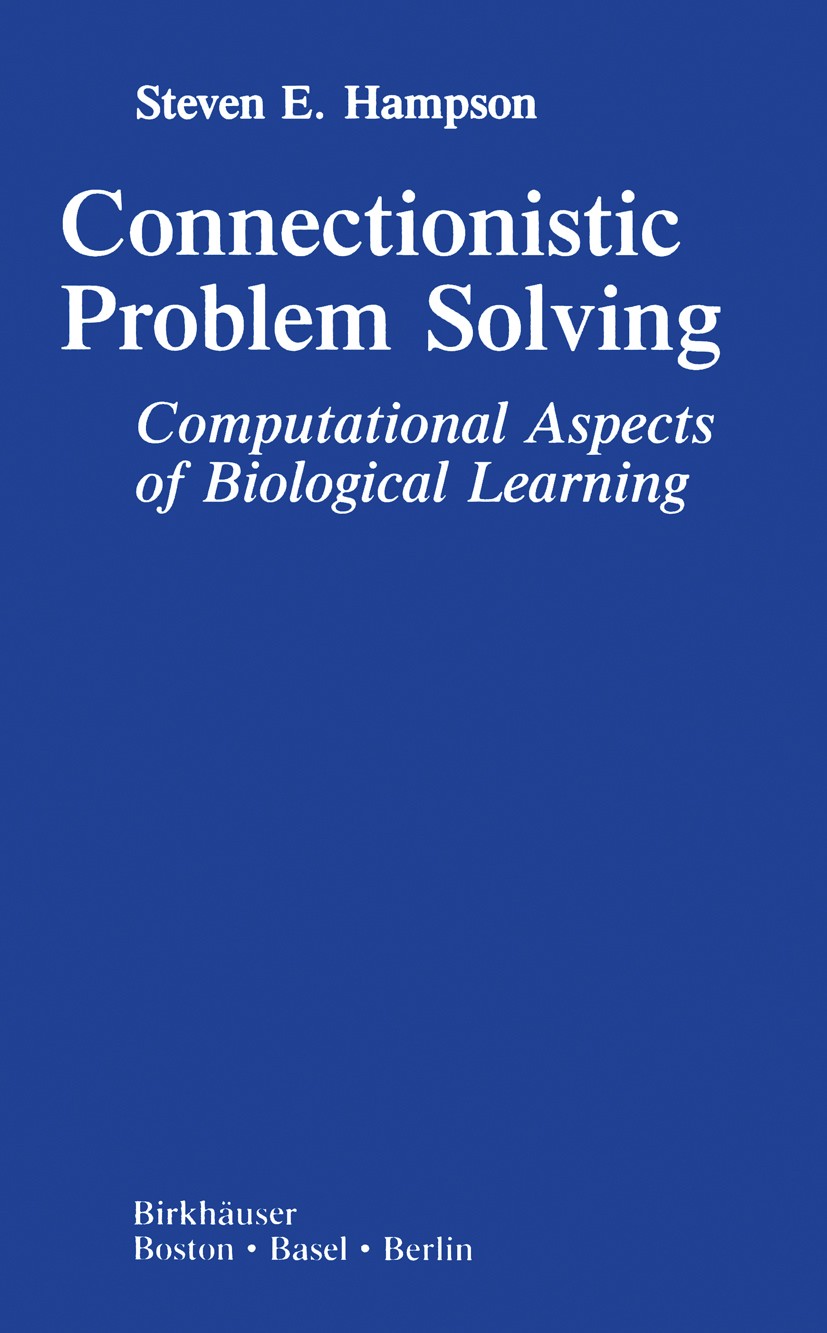| 書目名稱 | Connectionistic Problem Solving | | 副標(biāo)題 | Computational Aspect | | 編輯 | Steven E. Hampson | | 視頻video | http://file.papertrans.cn/236/235624/235624.mp4 | | 圖書封面 |  | | 描述 | 1. 1 The problem and the approach The model developed here, which is actually more a collection of com- ponents than a single monolithic structure, traces a path from relatively low-level neural/connectionistic structures and processes to relatively high-level animal/artificial intelligence behaviors. Incremental extension of this initial path permits increasingly sophisticated representation and processing strategies, and consequently increasingly sophisticated behavior. The initial chapters develop the basic components of the sys- tem at the node and network level, with the general goal of efficient category learning and representation. The later chapters are more con- cerned with the problems of assembling sequences of actions in order to achieve a given goal state. The model is referred to as connectionistic rather than neural, be- cause, while the basic components are neuron-like, there is only limited commitment to physiological realism. Consequently the neuron-like ele- ments are referred to as "nodes" rather than "neurons". The model is directed more at the behavioral level, and at that level, numerous con- cepts from animal learning theory are directly applicable to connec | | 出版日期 | Book 1990 | | 關(guān)鍵詞 | Extension; artificial intelligence; behavior; intelligence; learning; memory; modeling; problem solving; pro | | 版次 | 1 | | doi | https://doi.org/10.1007/978-1-4684-6770-3 | | isbn_softcover | 978-0-8176-3450-6 | | isbn_ebook | 978-1-4684-6770-3 | | copyright | Birkh?user Boston 1990 |
The information of publication is updating

|
|
 |Archiver|手機(jī)版|小黑屋|
派博傳思國際
( 京公網(wǎng)安備110108008328)
GMT+8, 2025-10-13 14:45
|Archiver|手機(jī)版|小黑屋|
派博傳思國際
( 京公網(wǎng)安備110108008328)
GMT+8, 2025-10-13 14:45


